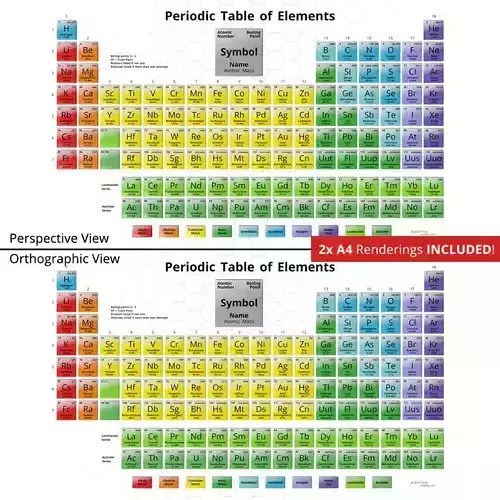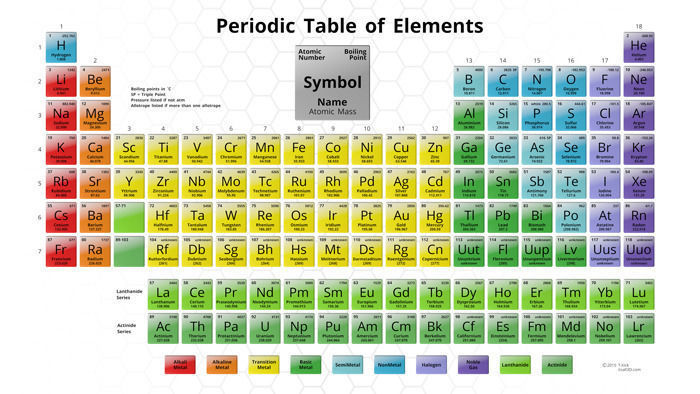
Periodic Table - 3D - Animatable Low-poly 3D model
PERIODIC TABLE
The periodic table is a tabular arrangement of the chemical elements, ordered by their atomic number (number of protons in the nucleus), electron configurations, and recurring chemical properties. In general, within one row (period) the elements are metals on the left-hand side, and non-metals on the right-hand side.
Dmitri Mendeleev is generally credited with the publication, in 1869, of the first widely recognized periodic table. He developed his table to illustrate periodic trends in the properties of the then-known elements. Mendeleev also predicted some properties of then-unknown elements that would be expected to fill gaps in this table. Most of his predictions were proved correct when the elements in question were subsequently discovered. Mendeleev's periodic table has since been expanded and refined with the discovery or synthesis of further new elements and the development of new theoretical models to explain chemical behavior.All elements from atomic numbers 1 (hydrogen) to 118 (ununoctium) have been discovered or reportedly synthesized, with elements 113, 115, 117, and 118 having yet to be confirmed.
The first 94 elements exist naturally, although some are found only in trace amounts and were synthesized in laboratories before being found in nature.[n 1] Elements with atomic numbers from 95 to 118 have only been synthesized in laboratories. It has been shown that elements 95 to 100 once occurred in nature but currently do not.[1] Synthesis of elements having higher atomic numbers is being pursued. Numerous synthetic radionuclides of naturally occurring elements have also been produced in laboratories.
[Source: https://en.wikipedia.org/wiki/Periodic_table ]
Polygon basedAnimatable: yesTextured: yesUV Unwrap: NoTextures included
2x A4 Renders INCLUDED!
MAX 2012 fileMental Ray
Poly: 1,087,460Vert: 569,466







